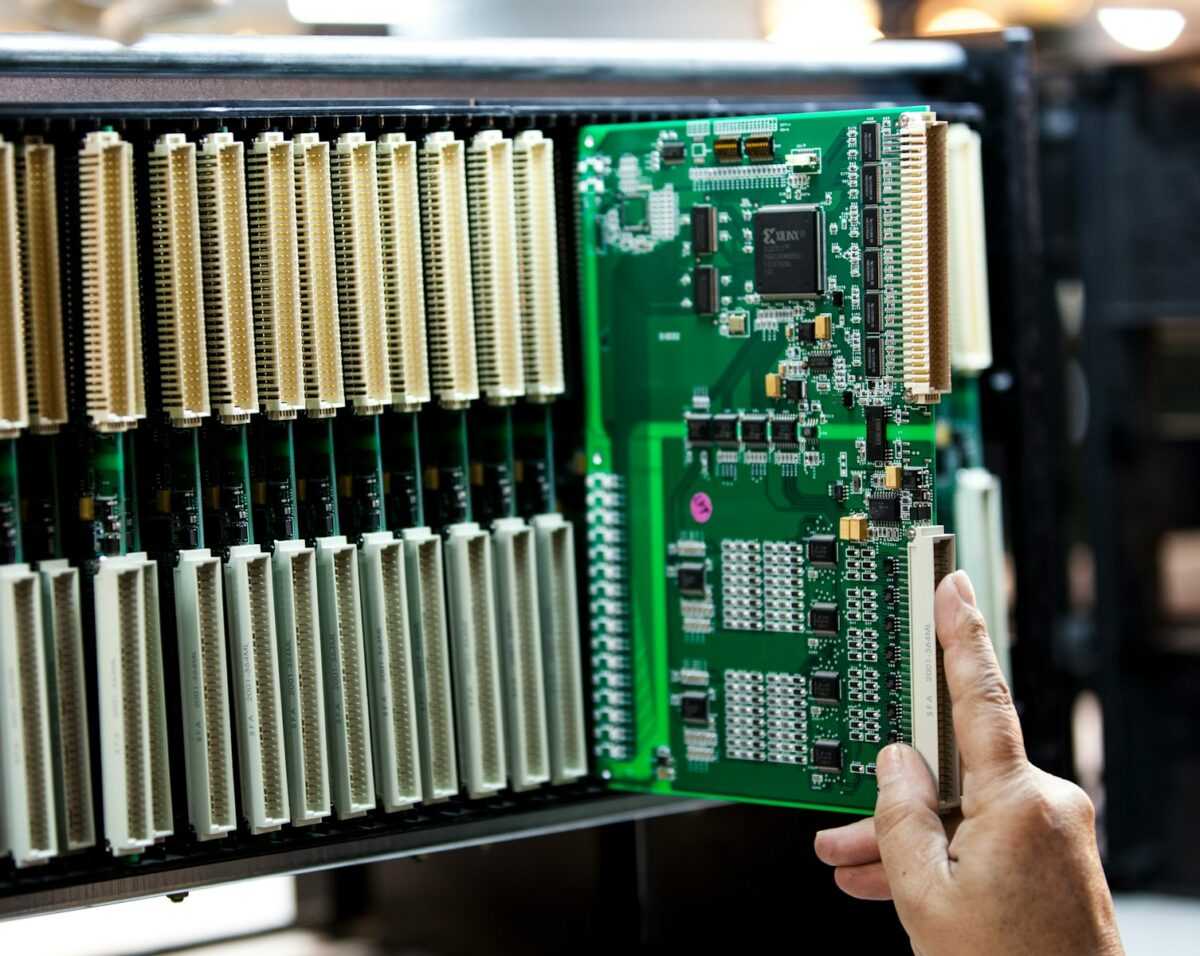Establishing agreement across distributed networks requires an algorithm that enforces effort-intensive problem solving. This approach leverages intense calculation to validate transactions while preventing fraudulent activities. The process relies on participants competing to solve cryptographic puzzles by investing substantial processing power and electrical consumption.
The competitive aspect incentivizes miners to expend energy performing complex hashing operations, which ensures the authenticity and chronological order of data entries. These calculations involve repeated attempts until a solution meeting strict criteria is found, effectively securing the network through demonstrated resource expenditure.
This validation technique embodies a decentralized verification protocol where participants achieve collective agreement without centralized control. By demanding significant computational resources, it deters malicious actors from dominating the network, as disproportionate investment is required for manipulation. Understanding this energy-dependent validation method provides insight into its strengths and limitations in maintaining secure, tamper-resistant ledgers.
Proof of Work: Computational Consensus Mechanism
To secure decentralized networks, a process involving intense computational effort is employed, where participants solve complex mathematical puzzles to validate transactions. This approach ensures that only nodes dedicating significant resources can influence the ledger, creating a robust barrier against malicious actors. The inherent difficulty and randomness of these calculations foster an environment of fair competition among miners.
This validation method requires miners to expend substantial energy by performing repeated hashing operations until they discover a solution meeting specific criteria. Such energy-intensive procedures not only verify new blocks but also safeguard the network’s integrity by making fraudulent alterations prohibitively expensive.
The Role of Competition in Securing Networks
In this system, miners compete to be the first to find valid solutions, earning rewards for their success. This rivalry drives continuous innovation in hardware and optimization techniques, leading to more efficient mining rigs and improved algorithmic strategies. For example, application-specific integrated circuits (ASICs) have dramatically increased hash rates while reducing power consumption compared to general-purpose CPUs or GPUs.
Competition also dynamically adjusts the difficulty level based on total network processing power, maintaining consistent block times despite fluctuations in mining participation. This self-regulating feature preserves stability and predictability within the distributed ledger environment.
Energy Consumption and Its Implications
The extensive use of electrical power is a well-documented consequence of this validation model. Research estimates global energy consumption of major networks using this approach ranges from several terawatt-hours annually, comparable to small countries’ electricity usage. Despite criticism regarding environmental impact, ongoing experiments focus on integrating renewable sources and improving hardware efficiency.
Laboratory investigations reveal that even marginal advancements in chip design or cooling methods can yield substantial reductions in total energy expenditure per solved puzzle. Encouragingly, some mining operations are relocating to regions with surplus hydropower or geothermal energy, demonstrating practical pathways toward sustainability.
Security Through Economic Deterrence
The security architecture relies on making attacks economically impractical by requiring immense resource investments for rewriting transaction histories. Altering past data demands recalculating numerous subsequent blocks faster than honest participants combined–a feat that grows exponentially difficult as chains lengthen.
This principle aligns with cryptographic assumptions about hash functions’ unpredictability and collision resistance. Case studies from network forks show how majority control over processing capacity enables censorship or double-spending attempts but at costs exceeding potential gains under normal conditions.
Experimental Validation via Mining Protocols
Hands-on experiments with testnets allow researchers and enthusiasts to observe parameter tuning effects such as difficulty adjustments and reward halving events on participant behavior. These controlled environments mimic real-world dynamics without risking economic assets, supporting iterative improvements in protocol design.
- Adjusting puzzle complexity directly influences the rate at which blocks are discovered;
- Reward distribution affects miner incentives and decentralization levels;
- Network latency impacts propagation speed and stale block occurrences.
Bridging Foundational Concepts with Advanced Applications
The foundational idea centers around expending measurable effort that is verifiable by others without revealing secret information beforehand. This transparency underpins trustless environments where consensus emerges organically through accumulated labor rather than centralized authority.
Future research avenues include hybrid frameworks combining this labor-based approach with alternative verification strategies aiming to reduce energy demands while preserving security guarantees. Experimental deployments will shed light on optimal configurations balancing performance, cost-efficiency, and resilience against evolving threats.
How PoW Validates Transactions
The validation of transactions in blockchain networks relies fundamentally on a process that demands significant energy expenditure to solve complex mathematical puzzles. This approach utilizes intense computational labor to establish trustworthiness and agreement among network participants, effectively preventing fraudulent activities. The system ensures that only legitimate transaction blocks are appended by requiring nodes–commonly called miners–to invest resources in solving a problem that is difficult to compute but easy for others to verify.
This procedure hinges on a competitive environment where numerous participants race to find a solution meeting specific criteria. The first node achieving this milestone broadcasts the result, which serves as evidence of the effort expended. Other nodes then confirm the validity of this outcome quickly and accept the block into the ledger, reinforcing integrity through collective verification.
Energy Consumption and Security Implications
The extensive power usage involved plays a dual role: it acts as a deterrent against attacks while simultaneously enhancing network robustness. By requiring substantial energy input for each attempt, malicious actors face prohibitive costs when attempting to alter transaction history or introduce invalid data. This financial barrier raises questions about sustainability but remains one of the most effective safeguards against double-spending and other security threats.
Experimental data from prominent cryptocurrencies like Bitcoin illustrate how increasing difficulty levels adjust dynamically based on total network capacity, ensuring consistent time intervals between validated blocks despite fluctuating participation rates. This adjustment maintains transactional finality and overall system resilience even during sudden changes in mining power.
The Role of Computational Challenge in Achieving Agreement
The core process involves participants performing iterative calculations to discover an output below a target value set by current conditions. Each trial requires immense iterations of hashing functions until an acceptable solution emerges. This puzzle-solving not only filters out illegitimate attempts but also synchronizes all nodes through transparent procedures that validate every addition without centralized control.
- Nodes expend energy attempting different inputs (nonces) until success.
- Solutions proving sufficient effort act as credentials for block acceptance.
- Network-wide verification solidifies final confirmation after broadcast.
Competition Dynamics and Network Integrity
The rivalry among mining entities fosters rapid progression towards valid blocks, leveraging parallelism across thousands of independent operators worldwide. This distributed contest reduces vulnerabilities inherent in centralized systems by dispersing decision-making authority. As miners vie for rewards, they inherently align their incentives with maintaining protocol rules, since deviation leads to rejection by peers and wasted resources.
Tangible Outcomes of Proof-Based Validation Systems
This form of transaction authentication establishes an immutable chronological order crucial for trustless environments lacking central authorities. It transforms raw numerical challenge results into verifiable attestations anchoring each block’s legitimacy firmly within shared consensus frameworks. Researchers have conducted laboratory simulations replicating varying participant counts and resource distributions to observe how such competitive protocols sustain fault tolerance under adversarial conditions.
A key insight from these experiments reveals that increased decentralization correlates positively with resilience; more diverse contributors dilute potential collusion risks while preserving economic incentives aligned with truthful behavior. Consequently, this technique has become foundational for many permissionless ledgers aiming at securing open participation without compromising reliability or transparency.
Hardware Requirements for Mining
Optimal mining performance depends primarily on specialized devices capable of executing intense numerical puzzles with high efficiency. Application-Specific Integrated Circuits (ASICs) dominate the landscape due to their tailored architecture that accelerates hash calculations far beyond general-purpose hardware. For instance, modern ASIC models such as Bitmain’s Antminer S19 Pro deliver hashrates exceeding 110 TH/s while maintaining energy consumption near 3250W, balancing processing power and electricity use–a critical parameter given the escalating global scrutiny on mining sustainability.
General-purpose GPUs remain relevant in certain ecosystems but face steep challenges in competing against ASICs in terms of speed and power efficiency. Mining rigs built around NVIDIA’s RTX 30-series cards can achieve hashrates between 60-120 MH/s per unit depending on algorithm specifics, yet their higher wattage-to-hash ratio often translates into increased operational costs. Careful selection based on algorithm compatibility and electricity pricing is essential to maintain profitability while preserving network resilience through distributed participation.
Technical Considerations for Secure and Efficient Mining
The security integrity of decentralized networks hinges significantly on the robustness of computational efforts behind block validation. Hardware must not only provide raw throughput but also ensure consistent uptime and error-free operation under sustained load. Failure rates or frequent downtime reduce effective competition capacity, weakening overall system fortification against malicious actors attempting double-spending or chain reorganizations. Redundant cooling solutions, stable power supplies, and real-time monitoring frameworks are indispensable components in a miner’s toolkit to uphold uninterrupted hashing activity.
Energy consumption remains a paramount constraint shaping hardware deployment strategies globally. Experimental setups incorporating renewable energy sources–solar panels or wind turbines–have demonstrated promising results in offsetting carbon footprints without sacrificing output intensity. Quantitative analyses reveal that hybrid configurations combining energy-efficient ASICs with dynamic load management algorithms can reduce total energy expenditure by up to 30%. Such innovations foster sustainable validation processes, ensuring longevity of decentralized ledgers while addressing environmental concerns intrinsic to competitive block generation tasks.
Energy Consumption and Costs
Mining operations securing decentralized networks require vast amounts of energy, driven by intense computational challenges that validate new data entries. This process demands specialized hardware running continuously, leading to significant electricity consumption measured in terawatt-hours annually. For instance, the Bitcoin network alone is estimated to consume around 100 TWh per year, comparable to the energy usage of medium-sized countries such as Argentina or Norway.
The competition among miners incentivizes increasing computational power to solve cryptographic puzzles faster than others, escalating energy use exponentially. Each participant invests heavily in equipment and electricity to enhance their chances of earning rewards, creating a self-reinforcing cycle where security relies on substantial resource expenditure. Such dynamics raise questions about environmental sustainability and operational costs within these validation frameworks.
Technical Perspectives on Energy Utilization
The correlation between network security and energy expenditure arises from the requirement that miners perform extensive calculations before confirming blocks. This calculation difficulty adjusts periodically, maintaining consistent intervals for block generation despite fluctuations in total processing capacity. Consequently, as more miners join or improve their setups, the system demands even greater electrical input to preserve its integrity against malicious actors.
Examining specific case studies reveals geographic variations affecting cost efficiency. Regions with low electricity prices and cooler climates attract large-scale mining farms aiming to optimize profitability while reducing cooling expenses. For example:
- China’s Sichuan province historically leveraged abundant hydropower during rainy seasons.
- Iceland benefits from geothermal energy and naturally cold conditions lowering operational overhead.
- The United States hosts diverse mining hubs balancing regulatory environments with power availability.
This strategic placement demonstrates how physical factors influence economic viability and ecological footprints tied to decentralized validation processes.
Recent advancements explore integrating renewable sources directly into mining infrastructures to mitigate carbon emissions without compromising security levels. Experimental trials combining solar or wind energy with battery storage systems aim to stabilize power supply amid intermittent generation patterns. These efforts underscore potential pathways toward more sustainable implementations by aligning incentive structures with greener technologies.
The intrinsic link between validation protocols relying on computational intensity and energy demand invites ongoing inquiry into balancing robust protection against excessive resource use. Experimentation with alternative algorithms focusing on reduced electrical requirements offers promising routes but must sustain resistance against fraudulent manipulation without compromise.
Security Against Double Spending
Preventing the reuse of identical digital tokens in blockchain transactions relies on the intense computational effort required to confirm each block. The process demands miners to solve complex cryptographic puzzles, thereby validating new entries and ensuring that any attempt to reverse or duplicate a transaction becomes prohibitively expensive. This ongoing competitive challenge among network participants establishes a robust barrier against fraudulent spending by making unauthorized alterations economically irrational.
The continuous contest for block validation requires substantial electrical power, which acts as a deterrent against malicious actors. Attempting to outpace honest participants necessitates controlling a majority of the total energy expended by all miners combined, an impractical feat for most adversaries due to the sheer scale of resources involved. Thus, the system’s resilience stems from aligning economic incentives with truthful behavior, where manipulating transaction history would demand overwhelming investment exceeding potential gains.
Experimental Insights into Transaction Finality
When examining double-spend resistance through hands-on trials, one observes that increasing the number of confirmations exponentially decreases the probability of successful rollback. For instance:
- A single confirmation allows minimal assurance; attackers can reorganize short chains with relative ease.
- At six confirmations–commonly considered industry standard–the cost and time required for chain reorganization grow beyond feasibility.
This relationship mirrors statistical mechanics principles where system stability improves with increased entropy–in this case, measured as accumulated computational effort embedded in successive blocks.
Further experimentation reveals that network latency and propagation delays influence vulnerability windows but do not undermine long-term security guarantees. Testing under simulated network partitions shows that forks created by timing discrepancies resolve naturally as competing branches accumulate more validation attempts, favoring the chain reflecting honest majority participation.
The observed interplay between algorithmic difficulty and resource expenditure creates a self-regulating ecosystem. Miners are incentivized to maintain honest participation since deviating would require disproportionate investment in hardware and energy–barriers that scale exponentially with attempted fraud complexity.
Optimizing PoW Mining Setup: Final Insights
Maximizing efficiency in mining rigs directly impacts competitiveness and operational sustainability. Prioritizing hardware configurations that balance hash rate output with minimized energy consumption enhances profitability while maintaining the integrity of the validation process.
Advanced strategies such as dynamic voltage frequency scaling, alongside tailored cooling solutions, reveal measurable reductions in thermal throttling and power draw. These adjustments translate into increased block discovery rates without compromising the robustness of the network’s protection protocols.
Key Technical Recommendations and Future Directions
- Energy-Aware Hardware Selection: Experiment with ASIC models offering optimal joules per terahash (J/TH) ratios; for example, newer chips achieve up to 30% improved energy efficiency compared to predecessors.
- Adaptive Load Distribution: Implement real-time monitoring systems that allocate processing workloads across units to prevent bottlenecks and uneven wear, preserving long-term operational stability.
- Algorithmic Fine-Tuning: Explore custom firmware capable of modulating nonce search patterns based on network difficulty fluctuations, thus optimizing computational effort under varying conditions.
The escalating rivalry among miners necessitates continuous innovation not only in raw processing power but also in sustainable design principles. Careful calibration between output intensity and electrical consumption safeguards both economic viability and environmental impact, fostering a resilient infrastructure for transaction verification.
A critical area for ongoing research involves integrating renewable energy sources directly into mining facilities paired with predictive analytics for workload scheduling. Such synergy promises to reduce carbon footprints while sustaining security guarantees intrinsic to trustless validation frameworks.
The path forward invites experimental validation of hybrid approaches combining computational intensity modulation with ecological stewardship. Each incremental improvement contributes toward a fortified digital ledger ecosystem where security remains uncompromised despite fierce resource competition.
This journey encourages systematic inquiry–how might emerging semiconductor materials or quantum-resistant computations redefine efficiency paradigms? By framing mining setups as evolving scientific experiments, practitioners can cultivate deeper mastery over both practical deployment and theoretical advancement within decentralized networks.








